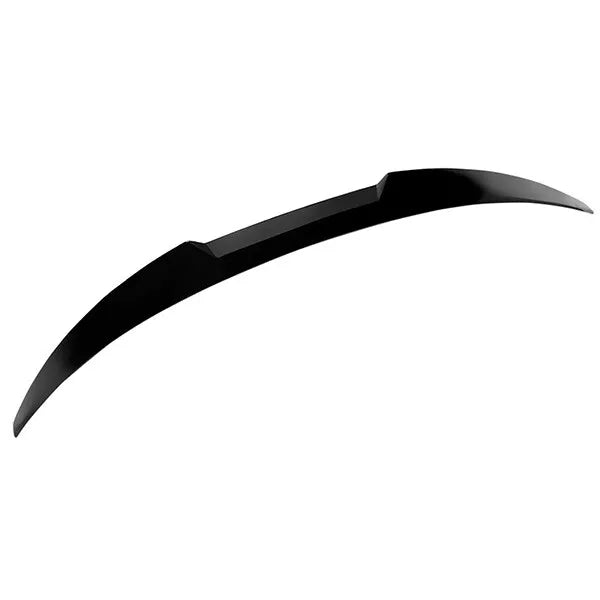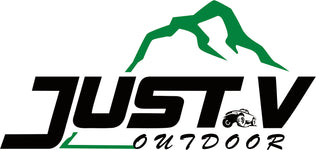
What Are Running Boards? Your Complete Guide to Vehicle Side Steps
Running boards are those handy platforms that run along the sides of trucks, SUVs, and vans. They're not just for looks - these useful additions help you step up into taller vehicles and protect the sides from road debris. While they were must-haves on old-school cars from the 1920s and 30s, today they're popular add-ons that blend daily practicality with style upgrades for many vehicles.
History of Running Boards
Back in the day, cars sat much higher off the ground, and running boards were standard equipment. They gave passengers a helpful boost to get in and out. As cars got lower and sleeker through the mid-1900s, running boards mostly disappeared from regular cars.
But when trucks and SUVs became all the rage in the 80s and 90s, running boards made a big comeback. First as add-ons you could buy separately, and later as options you could get straight from the factory on many higher-riding vehicles.
Today's running boards mix old-school usefulness with new-school design, using materials and styles that look great on modern vehicles while still doing their main job - helping you climb aboard.
Different Types You Can Choose From
There are several kinds of running boards and similar products to pick from:
Regular Running Boards
These are the classics - a flat step that runs most of the length of your vehicle's side, usually from front wheel to back wheel. They give you a steady platform to step on no matter which door you're using. They're typically made from tough stuff like aluminum, steel, or heavy-duty plastic, with a grippy surface so you don't slip when it's wet or snowy. Get runing borads from JustV!
Nerf Bars
Nerf bars are the round tube-style alternatives to flat running boards. Instead of a continuous step, they usually have step pads right where your doors are. They started out as off-road protection but now serve double-duty as steps and as guards against brush and obstacles. Many truck owners love their tough look that gives vehicles a more rugged appearance.
Side Steps
These are like the compact version of running boards. Side steps are smaller platforms placed right under the doors, giving you help getting in without running the entire length of the vehicle. They're less noticative than full-length boards but still give you that helpful boost when climbing in.
Power Running Boards
These are the high-tech option in the running board world. Power running boards stay hidden under your vehicle when the doors are closed, then automatically fold out when you open a door. Though they cost more and need more complex installation, they give you the best of both worlds: clean lines when driving and easy access when needed.
Why People Add Running Boards
Running boards offer several benefits beyond just helping you climb into tall vehicles:
Easier Access
This is still the main reason most people get running boards. They make it much easier to get in and out of high-clearance vehicles. This is super helpful for shorter people, kids, older folks, and anyone who finds that big step up challenging. By cutting down the climb height, running boards make trucks and SUVs more user-friendly for everyone.
Vehicle Protection
Running boards act as shields for your vehicle's sides. They can take the hit from rocks, gravel, and other road junk that might otherwise ding up your doors and side panels. This protection is especially valuable if you often drive on gravel roads or in places with harsh winters where road salt can cause rust.
Roof Help
If you carry kayaks, bikes, or camping gear on your roof rack, running boards give you a useful step to stand on while loading and securing that gear. This makes running boards particularly valuable for outdoor enthusiasts who frequently need to access the top of their vehicle.
What They're Made Of
The performance, looks, and lifespan of running boards largely depend on what they're made from:
Aluminum Boards
Aluminum running boards offer great strength without much weight, making them popular choices. They naturally resist rust, which is great for wet climates or areas where they salt the roads in winter. You can get them polished or powder-coated in different colors, and they don't need much maintenance.
Steel Boards
Steel running boards are super strong and can support more weight than most other types. They're usually powder-coated or chrome-plated to prevent rust, and with proper care, they'll last for years. They're perfect for work trucks and vehicles that see heavy use in tough conditions.
Plastic and Composite Boards
Modern plastic and composite running boards are light and durable. They naturally don't rust and typically need less maintenance than metal ones. Today's advanced materials have gotten much better at handling weight, making these increasingly popular for both practical use and good looks.
Getting Them Installed
Adding running boards to your vehicle involves a few important things to consider:
DIY or Professional Installation?
While many running board kits say they're easy to install yourself, the process can be trickier than it looks. Professional installation ensures they're properly aligned, securely attached, and correctly load-bearing. That said, if you're handy with tools and have some mechanical experience, you can successfully install many running board models, especially those designed specifically for your vehicle.
Will They Fit Your Vehicle?
Not all running boards work with all vehicles. Manufacturers design them to fit specific models, taking into account mounting points, clearance needs, and how they'll look. When shopping for running boards, always double-check they're compatible with your exact vehicle year, make, and model to avoid fitting problems.
How Much Weight Can They Hold?
Different running boards can support different amounts of weight. Think about how you'll use them—just as steps to get in and out, or as platforms for reaching roof cargo? Make sure the boards you pick can safely hold the weight you expect, remembering that dynamic weight (stepping or jumping on the board) puts more stress on them than static weight.
Ground Clearance Changes
Running boards will reduce your vehicle's ground clearance along the sides. This rarely matters for regular road driving but can be important for off-roading. If you take your vehicle off-road often, you might want retractable power running boards or more compact side steps that don't stick out as much.
Taking Care of Your Running Boards
Good maintenance helps your running boards last longer and keep looking good:
Keeping Them Clean
Regular cleaning prevents buildup of road grime, salt, and corrosive materials. For most running boards, a good rinse during your normal car wash is enough. Areas with textured surfaces might need occasional scrubbing with a soft brush to get dirt out of the grooves. Aluminum and stainless steel boards benefit from occasional metal polish to keep their shine.
Winter Care
In places with harsh winters, running boards face extra challenges from road salt, ice buildup, and cold temps. After driving in winter conditions, quickly remove any packed snow and ice to prevent moisture from sitting against mounting points. Applying protective wax or sealant before winter can help prevent corrosion during these tough months.
Checking for Problems
Every so often, check your running boards and their mounting hardware for issues. Look for loose bolts, signs of rust at attachment points, and any cracks or bending in the boards themselves. Fixing small problems early can prevent bigger failures that might lead to injuries or vehicle damage.
What They Cost
Running board prices vary widely based on several factors:
Price Range
Basic running boards typically start around $150-$300 per pair, while fancy options with features like power deployment or built-in lighting can cost over $1,000. This wide price range reflects big differences in materials, design complexity, and extra features.
Long-Term Value
Beyond their immediate benefits, quality running boards can provide long-term value by protecting your vehicle's side panels and door edges from damage. This protection can prevent costly body repairs and help maintain resale value, especially for vehicles used in rough conditions or off-road.
Warranty Protection
Manufacturer warranties for running boards typically range from one to five years, with pricier products usually offering longer coverage. These warranty protections give you important peace of mind about product quality and durability, making them worth considering when comparing different options.
Picking the Right Ones for Your Vehicle
Choosing the ideal running boards means balancing several factors:
How You Use Your Vehicle
How you use your vehicle should heavily influence which running boards you pick. Daily commuters might want a clean look and ease of use, while off-roaders might prefer options with better durability and minimal impact on ground clearance. If you regularly transport passengers who have trouble with high steps, you might benefit most from wider boards with more stable footing.
Your Local Weather
Your local climate affects which running board features matter most. In rainy areas, prioritize options with good water drainage and grip to prevent slipping. In snowy regions, consider how easily snow and ice can be cleared from different board designs. In hot, sunny places, remember that metal running boards can get very hot in direct sunlight.
Wrap-Up
Running boards are a practical upgrade for many vehicles, offering easier access while adding protection and style points. From traditional fixed boards to fancy power-deploying models, today's market has options for virtually any vehicle and owner preference. By carefully thinking about materials, design, installation needs, and maintenance, you can pick running boards that deliver the perfect mix of function and style for your specific situation.
